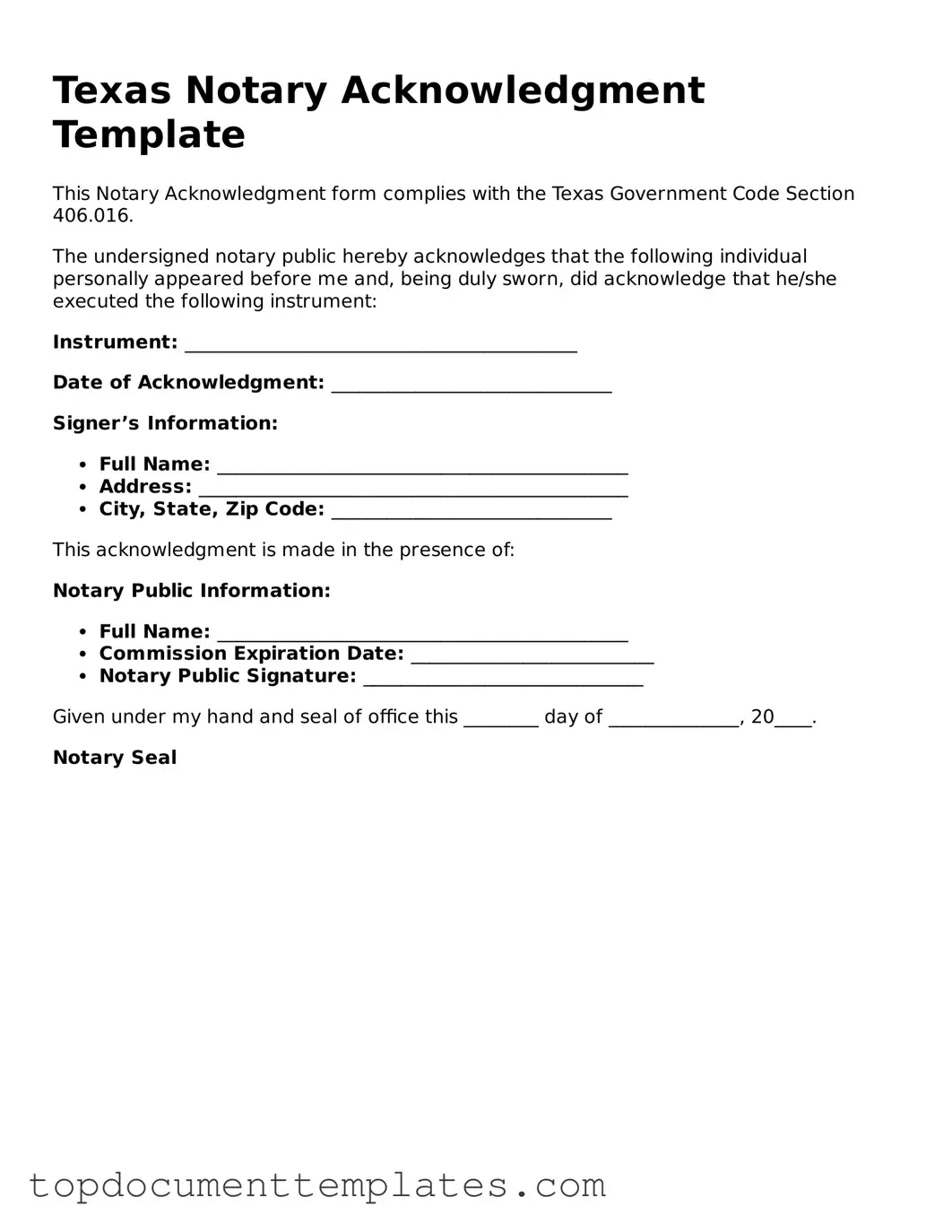The Texas Notary Acknowledgement form plays a crucial role in the notarization process, ensuring that documents are properly verified and authenticated. This form is essential for various legal transactions, such as real estate deals, contracts, and other significant agreements that require a notary's stamp of approval. It serves to confirm that the signer has willingly appeared before the notary, providing assurance that their identity has been verified and that they understand the contents of the document. The form typically includes key elements such as the notary's signature, seal, and the date of the acknowledgment, all of which contribute to the document's validity. Furthermore, it outlines the specific details of the transaction, including the names of the parties involved and the type of document being notarized. Understanding the Texas Notary Acknowledgement form is vital for anyone engaged in legal or financial matters, as it helps to safeguard against fraud and ensures that transactions are executed with integrity.
